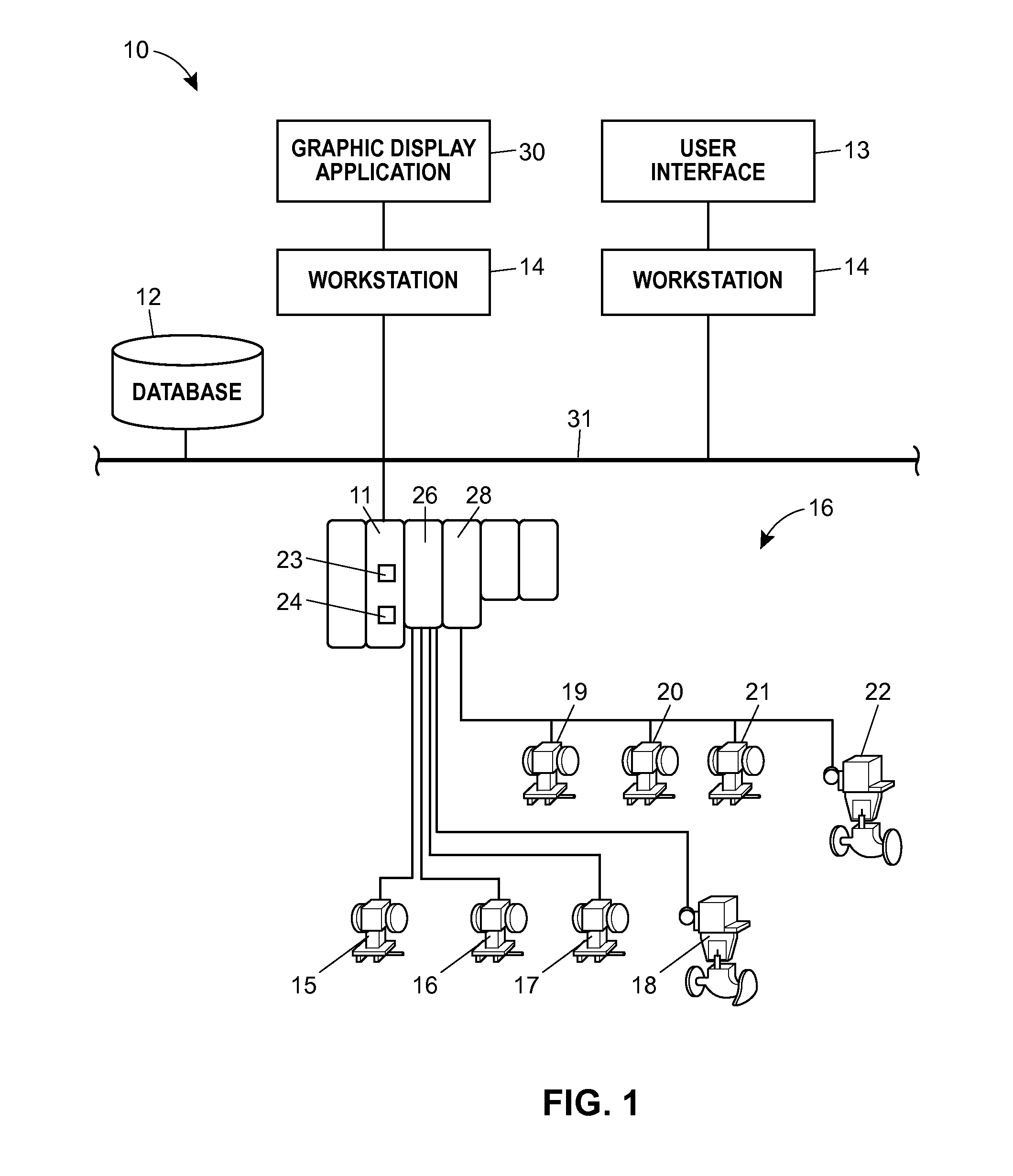Unfortunately, however, the display of real-time values in P&IDs does not effectively support the detection of changes in these real-time values over time.
In other words, the display of real-time
process variable values via the P&ID does not enable the user of the P&ID to easily detect or understand trends within the real-
time data being depicted.
In fact, because the P&IDs tend to cram real-time values within the screen spaces not used by the equipment depicted in the quasi-spatially realistic display, it may be difficult for a user to see and understand the real-
time data itself, much less the temporal trends within that data.
Besides operating to hide real-
time data within more graphical
clutter, these more complex P&IDs typically include inconsistent layouts (from P&ID to P&ID), making locating the real-
time parameter values harder and harder for users who must switch between multiple different P&IDs.
In effect, these recent trends merely exacerbate
clutter within the P&IDs, which further slows searches for process parameter data made by the users.
As a result, an operator using a P&ID to monitor a process, may quickly lose focus in the vast amount of information presented in the P&ID or may miss important
process variable trends or patterns emerging within the process because the operator is presented with such an
expansive amount of
detailed data.
Moreover, this immense amount of data, especially in a large, complex
process plant, is difficult to view, much less to absorb and to understand using only a P&ID and (potentially other supporting graphs or diagrams, such as process variable trend graphs, accessible via the P&ID).
As a result, the operator may exert unnecessary time and energy in locating and comparing a current value of a process variable with a
setpoint value, a desired value, etc.
Moreover, by not detecting or
identifying problems during the process more quickly, such as a worsening condition of a particular process variable, etc., the operator may be slow to react to correct a potential runaway process that could result in serious injuries, property damage, environmental
contamination, or even death.
Additionally, navigation within the P&ID of a large-scale, complex
process plant may
pose difficulties for the operator.
Because of the hierarchical nature and the large scope of process plants, navigating to different portions or areas of the process plants via the P&ID may be confusing, difficult, and counterintuitive.
Depending on the current hierarchical level or detail level of a representation of the process plant that the control operator is viewing via a P&ID, the operator may have trouble properly determining the current location within the representation of the process plant that is displayed within a
viewport within the context of the other areas of the process plant.
That is, there is typically no consistent stimulus-response mapping between the navigation hyperlinks and what these hyperlinks lead to, leaving a less experienced operator with an uncertain feeling when navigating through a series of interconnected P&IDs.
Moreover, the hyperlinks provided to the operator are generally only for navigation within a current hierarchical level and do not provide additional options for navigation throughout the locations and hierarchy within the representation of the process plant.
In other words, the P&ID lacks the capability for the operator to “
drill down” into more detailed, hierarchical levels while maintaining the context of the entire representation of the process plant.
For example, if a different area of the representation of the process plant requires immediate attention of the operator, such as a process variable in the different area that is leading to a
runway condition of the process, the operator may have trouble determining, and subsequently navigating to, the location of the different area in the process plant relative to the current location of the process plant.
Likewise, if the operator does successfully navigate to the location of the different area of the identified problem, the control operator may still need to contend with attempting to obtain the proper
level of detail of the process control variables.
At too high of detail level, the operator may possess too little process control information in viewing only the P&ID.
Moreover, the detailed information sources may not be integrated with the P&ID and may require the control operator to view information of various levels of detail that is distributed across multiple separate windows or screens.
Possessing too few or too many details may lead to the control operator making incomplete or slow decisions, respectively, that may cause serious consequences during a critical incident or period.
 Login to View More
Login to View More  Login to View More
Login to View More 


